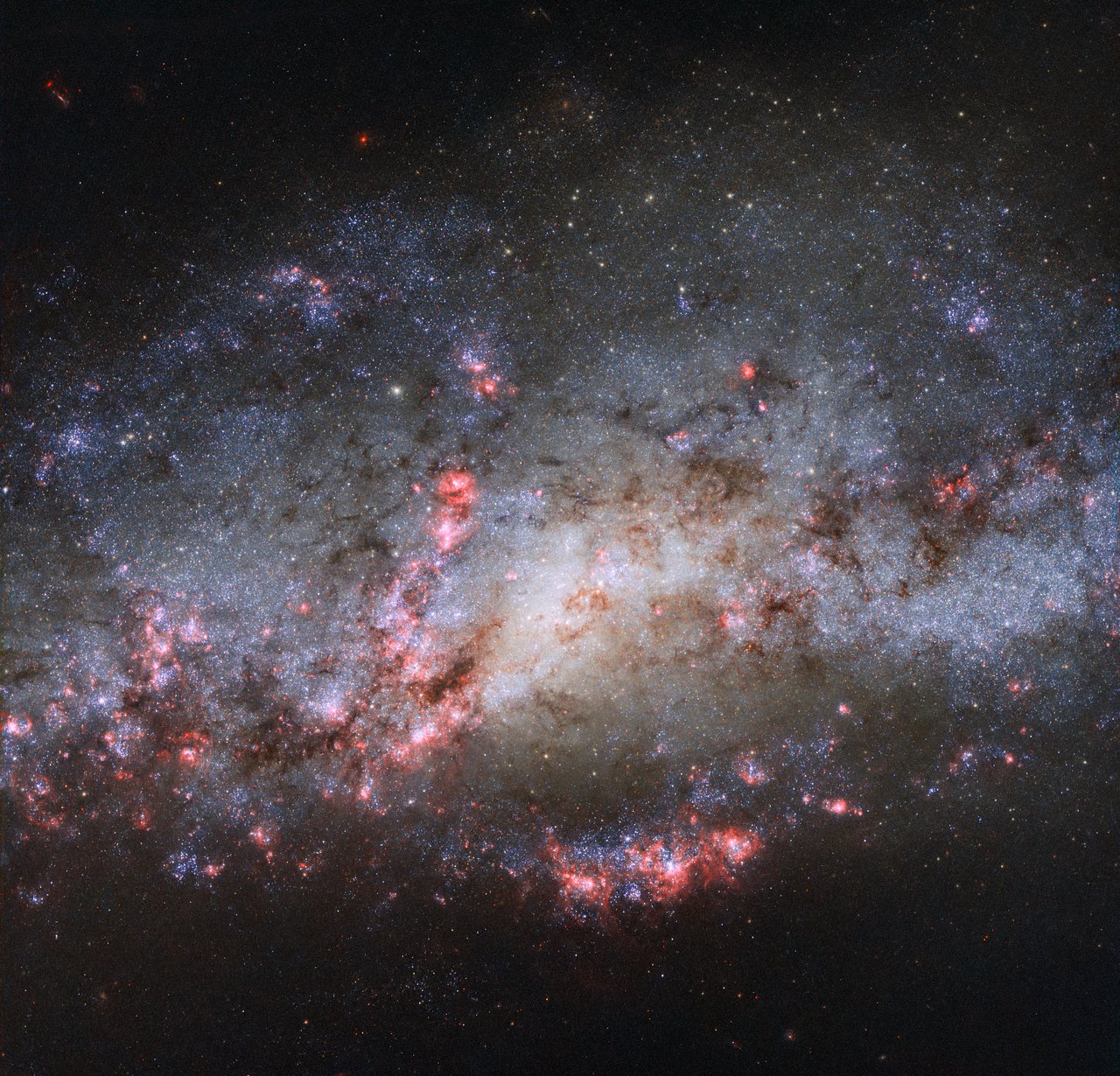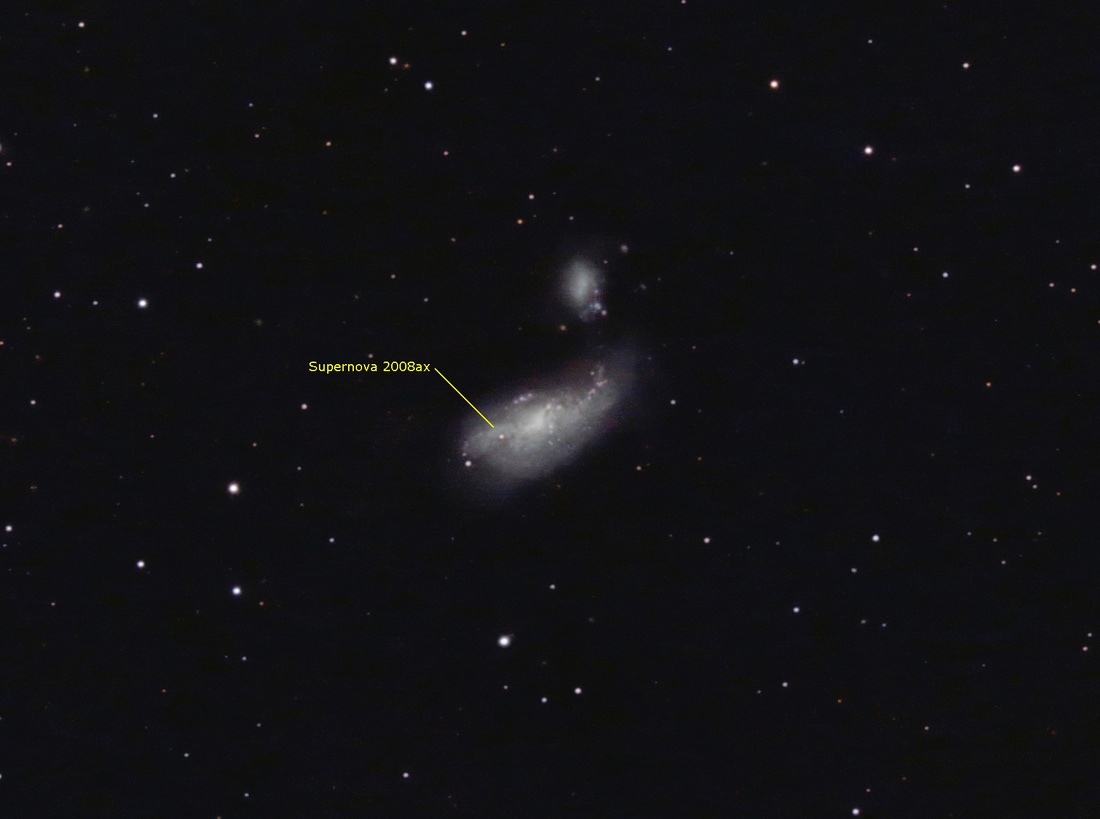Pink Clouds Reveal Galactic Collision in New Cocoon Galaxy Image
The Cocoon Galaxy, once entangled with a neighboring galaxy in a violent and life-producing cosmic dance, will warp and twist again in several billions of years.
The Hubble Space Telescope recently captured a speckled and sparkling image of the Cocoon Galaxy, also known as NGC 4490. Over millions of years, it morphed from an elegant spiral shape, like that of the Milky Way Galaxy, which contains Earth's solar system, into an elongated system of scattered star births and deaths.
While gravity is a weak force for small objects, it creates a powerful attraction between massive structures like galaxies. In NGC 4490's case, the smaller galaxy NGC 4485 was drawn in by gravity, moving and colliding through its larger neighbor and altering the properties of them both, according to Hubble's image caption. The impact from the smaller galaxy stretched out the bigger galaxy, which only has a few remaining signs of its former spiral shape, like the curved arm that connects it with the smaller NGC 4485. [What Makes Starburst Galaxies Spawn at a Frenzied Pace? (Video)]

Both galaxies are collectively known as system Arp 269, located in the constellation Canes Venatici, or the Hunting Dogs.
According to the caption, the bright-pink colors throughout the Hubble image are active regions where stars are forming. The galactic impact dislodged gas and dust, which are reassembling as the two galaxies are about 24,000 light years apart from each other. The collision produced ripples packed with dense areas, which are prime for star creation. Clouds of ionized hydrogen are so dense, they radiate a pink glow as they're lit by the more fully formed young stars nearby.

NGC 4490 is called a starburst galaxy because it is brimming with stellar birth. However, it is also full of supernovas, the dramatic explosions caused by the death of stars. Several supernovas have been spotted within the Cocoon galaxy in the last few decades, in 1982 and 2008, officials wrote in the caption.
In billions of years, it's likely NGC 4490 and NGC 4485 will tug one another with their gravitational forces and collide once again.
Get the Space.com Newsletter
Breaking space news, the latest updates on rocket launches, skywatching events and more!
Follow Doris Elin Salazar on Twitter@salazar_elin. Follow us @Spacedotcom, Facebook and Google+. Original article on Space.com.
Join our Space Forums to keep talking space on the latest missions, night sky and more! And if you have a news tip, correction or comment, let us know at: community@space.com.

Doris is a science journalist and Space.com contributor. She received a B.A. in Sociology and Communications at Fordham University in New York City. Her first work was published in collaboration with London Mining Network, where her love of science writing was born. Her passion for astronomy started as a kid when she helped her sister build a model solar system in the Bronx. She got her first shot at astronomy writing as a Space.com editorial intern and continues to write about all things cosmic for the website. Doris has also written about microscopic plant life for Scientific American’s website and about whale calls for their print magazine. She has also written about ancient humans for Inverse, with stories ranging from how to recreate Pompeii’s cuisine to how to map the Polynesian expansion through genomics. She currently shares her home with two rabbits. Follow her on twitter at @salazar_elin.









